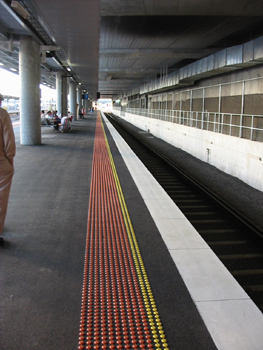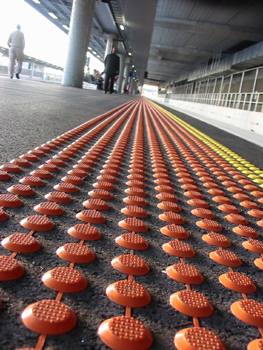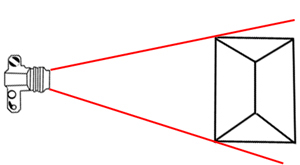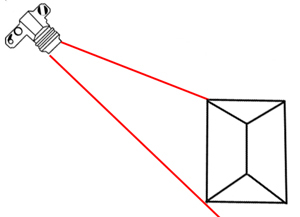Sequence viewing > Aesthetics Index - Resource - ©
Lloyd Godman
Perspective. Viewpoint
Its strange how we often think that we have to go somewhere exotic to take good pictures – this is because we see a new world – its harder to see our everyday old world in a new way – that what often takes a good photograph. This often relates to camera viewpoint - where we position the camera.
Camera
position - affect on perspective
The
size of the subject is determined by the projection distance between
the lens and the film plane, which is a function of the camera-to-subject
distance and the focal length of the lens.
The
shape of the subject and the size relationships between different objects
in the scene are also determined by the lens-to-film plane projection
distances. As
we move the camera position the respective lines that project to a single
vanishing point in an image alter -

As
most images are taken from the a standing position - the perspective
is from the level of the human eye when standing. Here we see
the lines project to a single vanishing point. |
|

In
this image the view point is much lower and the angles become
much more acute - the image has a more dramatic effect.
|

Move
over image to view roll over image
When
an object or a section of it is centered in front of the lens,
the image it projects onto the film plane will fall in the exact
centre of the image circle. The light rays from the centered
object cross in the centre of the lens and travel an equal distance
to the film plane. This lens to subject alignment usually
provides the most accurate recording of an objects shape. |
|

|
 Move
over image to view roll over image
Move
over image to view roll over image
As
an object moves away from alignment with the centre of the
lens, or as its extremities recede from the centered position,
its projected image will move to the edges of the image circle.
Inside the camera, light rays from the farthest edges of the
object must now be projected a greater distance to the film
than the light rays projected through the centre. The
section of the object farthest from the centre of the lens
consequently expands due to the greater projection distance,
and changes the objects shape in the final image.
This
'distortion' is more noticeable with wider than normal lenses
because of the relative difference in projection distances.
|
|
 |
|